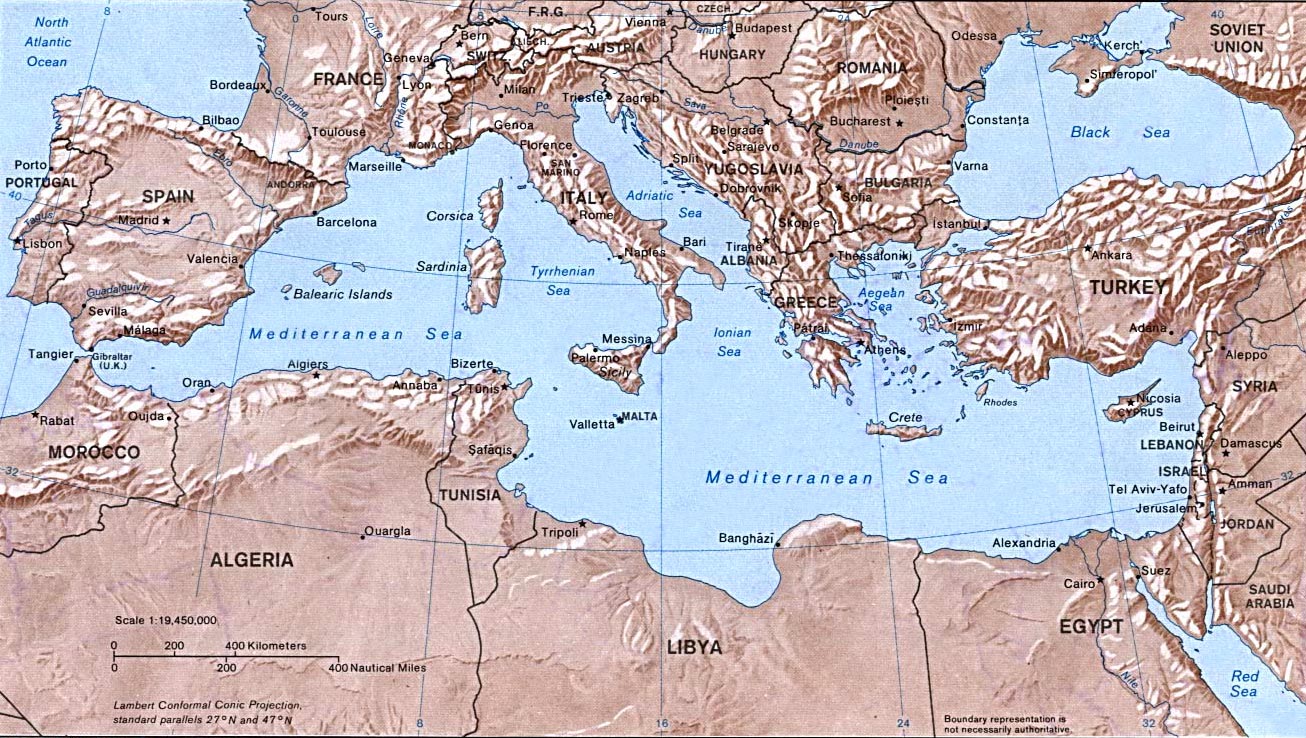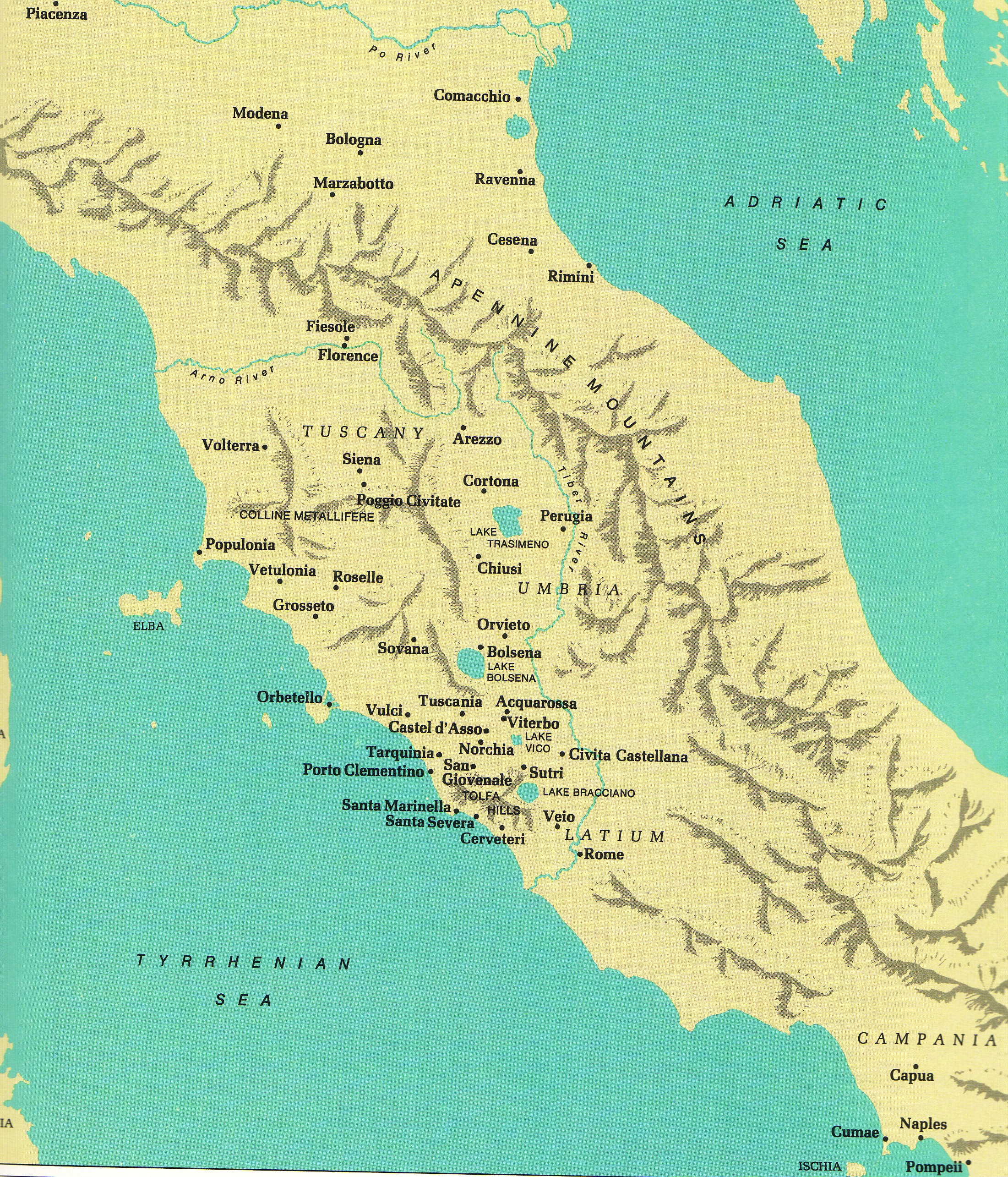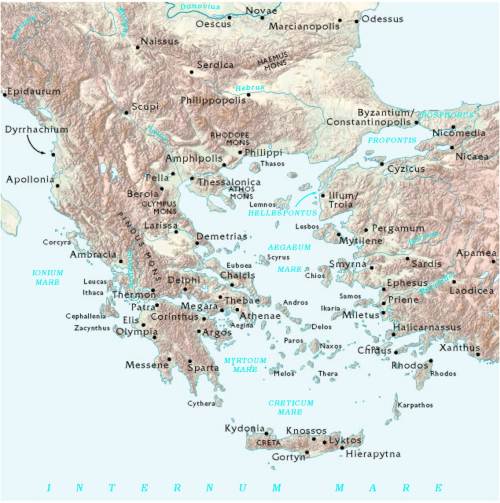

LANDFORMS
includes Aegean Sea coastline and islands plus northern Mediterranean coastline (southern Mediterranean coastline along Africa is omitted)
includes modern-day countries of Greece, coastal Turkey, lower
Balkans (Albania; Macedonia; countries formerly part of Yugoslavia =
Bulgaria, Serbia, Bosnia-Herzegovinia, Croatia),
Italy, southern France, Spain, various islands including Crete

complex system of mountains, volcanoes, deep river valleys, coastal plains, islands and seas
tectonically active area: continental rifting that causes
earthquake
and volcanic activity (examples: Pompeii in Italy, Thera in Aegean)
major landforms in Italy are Apennine Mtns, Arno River, Tiber River,
Po River, Swiss Alps to north

major landforms in Aegean are Crete, Cyclades islands, Greek
mainland, various mountain ranges
and rivers

CLIMATE
Mediterranean climate with hot dry summers and mild winters
POSITIVE FEATURES
1. wide variety of plants, many of which were domesticated (facilitated shift to food production)
2. sources of raw materials, especially metal ores and obsidian (related to craft production and inter-regional exchange)
3. many natural harbors (related to sea-based exchange
networks
and naval branch of military)
NEGATIVE FEATURES
1. seasonal water shortages at lower altitudes (presents challenges to food producers)
2. earthquake and volcanic activity (destructive to
structures,
particularly problematic in urban areas)